2-Benzyl-4,5-dichloropyridazine-3(2H)-one
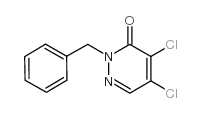
2-Benzyl-4,5-dichloropyridazine-3(2H)-one structure
|
Common Name | 2-Benzyl-4,5-dichloropyridazine-3(2H)-one | ||
|---|---|---|---|---|
| CAS Number | 41933-33-9 | Molecular Weight | 255.10000 | |
| Density | 1.38g/cm3 | Boiling Point | 338ºC at 760 mmHg | |
| Molecular Formula | C11H8Cl2N2O | Melting Point | 87ºC | |
| MSDS | N/A | Flash Point | 158.2ºC | |
Use of 2-Benzyl-4,5-dichloropyridazine-3(2H)-oneEcDsbB-IN-9 (Compound 9) is a potent E. coli DsbB (EcDsbB) inhibitor with an IC50 of 1.7 μM and a Ki of 46 nM[1]. |
| Name | 2-Benzyl-4,5-dichloropyridazin-3(2H)-one |
|---|---|
| Synonym | More Synonyms |
| Description | EcDsbB-IN-9 (Compound 9) is a potent E. coli DsbB (EcDsbB) inhibitor with an IC50 of 1.7 μM and a Ki of 46 nM[1]. |
|---|---|
| Related Catalog | |
| Target |
IC50: 1.7 μM (EcDsbB)[1] Ki: 46 nM (EcDsbB)[1] |
| In Vitro | EcDsbB-IN-9 (Compound 9) (0-100 μM) causes accumulation of reduced DsbA (EcDsbB substrate) and inhibits oxidation of DsbA with an IC50 of 8.5 ± 0.6 μM[1]. |
| Density | 1.38g/cm3 |
|---|---|
| Boiling Point | 338ºC at 760 mmHg |
| Melting Point | 87ºC |
| Molecular Formula | C11H8Cl2N2O |
| Molecular Weight | 255.10000 |
| Flash Point | 158.2ºC |
| Exact Mass | 254.00100 |
| PSA | 34.89000 |
| LogP | 2.59840 |
| Index of Refraction | 1.626 |
| InChIKey | AJHBQZQCDCTOFD-UHFFFAOYSA-N |
| SMILES | O=c1c(Cl)c(Cl)cnn1Cc1ccccc1 |
Synonym:2-Benzyl-4,5-dichloropyridazine-3(2H)-on Section 2 - COMPOSITION, INFORMATION ON INGREDIENTS
Risk Phrases: 36/37/38 Section 3 - HAZARDS IDENTIFICATION EMERGENCY OVERVIEW
Irritating to eyes, respiratory system and skin. Potential Health Effects Eye: Causes eye irritation. Skin: Causes skin irritation. May be harmful if absorbed through the skin. Ingestion: May cause irritation of the digestive tract. May be harmful if swallowed. Inhalation: Causes respiratory tract irritation. May be harmful if inhaled. Chronic: Not available. Section 4 - FIRST AID MEASURES Eyes: Flush eyes with plenty of water for at least 15 minutes, occasionally lifting the upper and lower eyelids. Get medical aid. Skin: Get medical aid. Flush skin with plenty of water for at least 15 minutes while removing contaminated clothing and shoes. Ingestion: Get medical aid. Wash mouth out with water. Inhalation: Remove from exposure and move to fresh air immediately. If not breathing, give artificial respiration. If breathing is difficult, give oxygen. Get medical aid. Notes to Physician: Treat symptomatically and supportively. Section 5 - FIRE FIGHTING MEASURES General Information: As in any fire, wear a self-contained breathing apparatus in pressure-demand, MSHA/NIOSH (approved or equivalent), and full protective gear. Extinguishing Media: Use water spray, dry chemical, carbon dioxide, or chemical foam. Section 6 - ACCIDENTAL RELEASE MEASURES General Information: Use proper personal protective equipment as indicated in Section 8. Spills/Leaks: Vacuum or sweep up material and place into a suitable disposal container. Section 7 - HANDLING and STORAGE Handling: Avoid breathing dust, vapor, mist, or gas. Avoid contact with skin and eyes. Storage: Store in a cool, dry place. Store in a tightly closed container. Section 8 - EXPOSURE CONTROLS, PERSONAL PROTECTION Engineering Controls: Facilities storing or utilizing this material should be equipped with an eyewash facility and a safety shower. Use adequate ventilation to keep airborne concentrations low. Exposure Limits CAS# 41933-33-9: Personal Protective Equipment Eyes: Not available. Skin: Wear appropriate protective gloves to prevent skin exposure. Clothing: Wear appropriate protective clothing to prevent skin exposure. Respirators: Follow the OSHA respirator regulations found in 29 CFR 1910.134 or European Standard EN 149. Use a NIOSH/MSHA or European Standard EN 149 approved respirator if exposure limits are exceeded or if irritation or other symptoms are experienced. Section 9 - PHYSICAL AND CHEMICAL PROPERTIES Physical State: Solid Color: orange Odor: Not available. pH: Not available. Vapor Pressure: Not available. Viscosity: Not available. Boiling Point: Not available. Freezing/Melting Point: 87 - 89 deg C Autoignition Temperature: Not available. Flash Point: Not available. Explosion Limits, lower: Not available. Explosion Limits, upper: Not available. Decomposition Temperature: Solubility in water: Specific Gravity/Density: Molecular Formula: C11H8Cl2N2O Molecular Weight: 255 Section 10 - STABILITY AND REACTIVITY Chemical Stability: Not available. Conditions to Avoid: Incompatible materials. Incompatibilities with Other Materials: Oxidizing agents. Hazardous Decomposition Products: Hydrogen chloride, chlorine, nitrogen oxides, carbon monoxide, carbon dioxide. Hazardous Polymerization: Has not been reported Section 11 - TOXICOLOGICAL INFORMATION RTECS#: CAS# 41933-33-9 unlisted. LD50/LC50: Not available. Carcinogenicity: 2-Benzyl-4,5-dichloro-2,3-dihydropyridazin-3-one - Not listed by ACGIH, IARC, or NTP. Section 12 - ECOLOGICAL INFORMATION Section 13 - DISPOSAL CONSIDERATIONS Dispose of in a manner consistent with federal, state, and local regulations. Section 14 - TRANSPORT INFORMATION IATA No information available. IMO No information available. RID/ADR No information available. Section 15 - REGULATORY INFORMATION European/International Regulations European Labeling in Accordance with EC Directives Hazard Symbols: XI Risk Phrases: R 36/37/38 Irritating to eyes, respiratory system and skin. Safety Phrases: S 26 In case of contact with eyes, rinse immediately with plenty of water and seek medical advice. S 37/39 Wear suitable gloves and eye/face protection. WGK (Water Danger/Protection) CAS# 41933-33-9: No information available. Canada None of the chemicals in this product are listed on the DSL/NDSL list. CAS# 41933-33-9 is not listed on Canada's Ingredient Disclosure List. US FEDERAL TSCA CAS# 41933-33-9 is not listed on the TSCA inventory. It is for research and development use only. SECTION 16 - ADDITIONAL INFORMATION N/A |
| Hazard Codes | Xi:Irritant; |
|---|---|
| Risk Phrases | R36/37/38 |
| Safety Phrases | S26-S37/39 |
| HS Code | 2933990090 |
|
~95% 
2-Benzyl-4,5-di... CAS#:41933-33-9 |
| Literature: Ewing, William R.; Zhu, Yeheng; Ellsworth, Bruce A. Patent: US2006/287323 A1, 2006 ; Location in patent: Page/Page column 12 ; US 20060287323 A1 |
|
~92% 
2-Benzyl-4,5-di... CAS#:41933-33-9 |
| Literature: Cho, Su-Dong; Kweon, Deok-Heon; Kang, Young-Jin; Chung, Hyun-A.; Yoon, Yong-Jin Journal of Heterocyclic Chemistry, 1998 , vol. 35, # 3 p. 601 - 605 |
| HS Code | 2933990090 |
|---|---|
| Summary | 2933990090. heterocyclic compounds with nitrogen hetero-atom(s) only. VAT:17.0%. Tax rebate rate:13.0%. . MFN tariff:6.5%. General tariff:20.0% |
| 2-benzyl-4,5-dichloropyridazin-3-one |
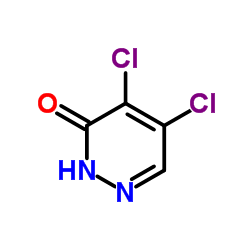
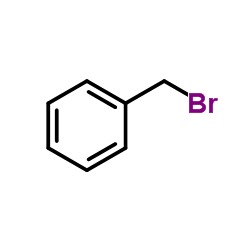
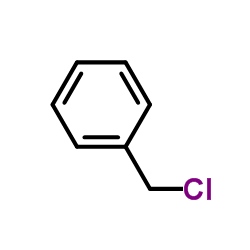
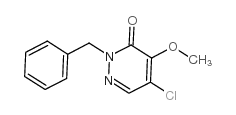 CAS#:77541-65-2
CAS#:77541-65-2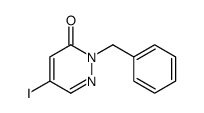 CAS#:825633-93-0
CAS#:825633-93-0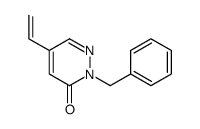 CAS#:825634-03-5
CAS#:825634-03-5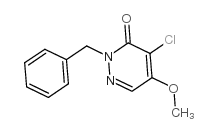 CAS#:40890-47-9
CAS#:40890-47-9
